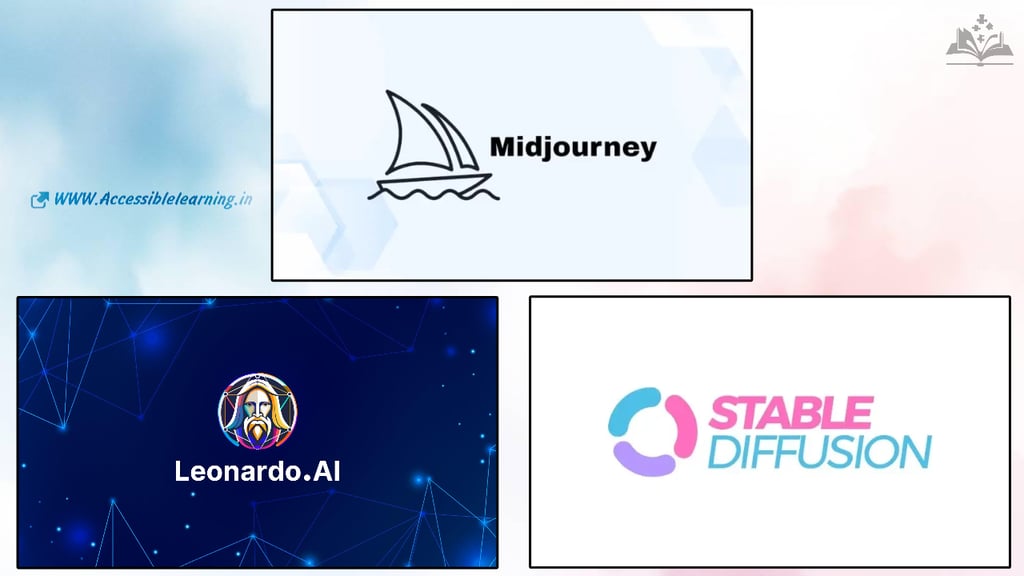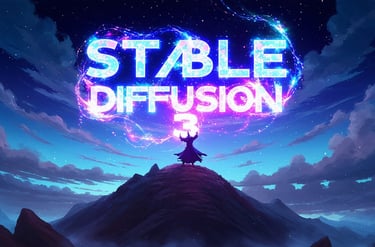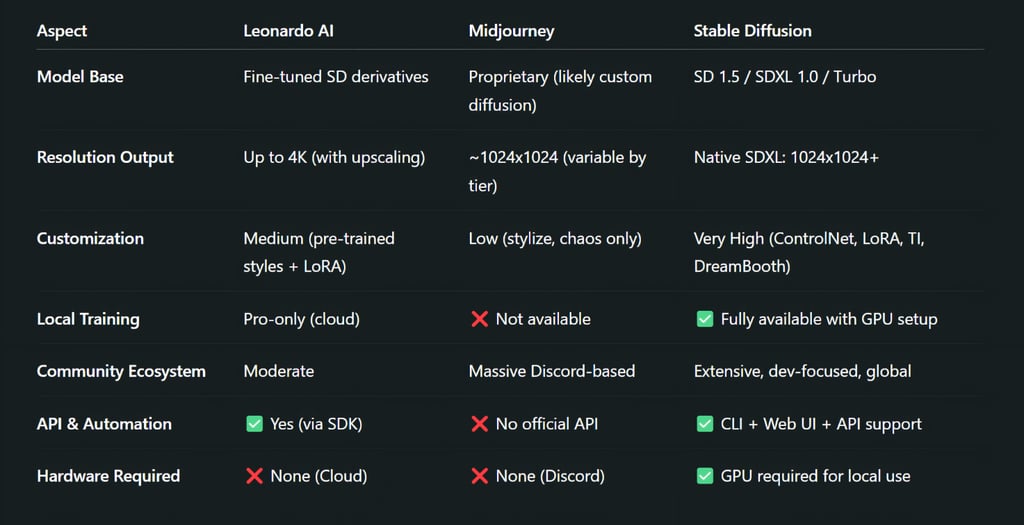
Midjourney vs Stable Diffusion vs Leonardo AI: Performance, Control & Use Case Guide
Discover the ultimate 2025 comparison between Leonardo AI, Midjourney, and Stable Diffusion. Explore their technical differences, image quality, customization tools, and ideal use cases for artists, developers, and designers alike.
AI ART TOOLSEDITOR/TOOLSAI/FUTURECOMPANY/INDUSTRY
Sachin K Chaurasiya
5/7/20254 min read


AI-generated art has gone from niche novelty to mainstream revolution, with tools like Leonardo AI, Midjourney, and Stable Diffusion leading the charge. Whether you're a digital artist, content creator, marketer, or casual enthusiast, choosing the right AI art platform can make all the difference.
In this comprehensive guide, we’ll break down how these three platforms compare in terms of quality, speed, control, ease of use, licensing, and use cases—so you can confidently pick the one that suits your creative workflow.
What is Leonardo AI?
Leonardo AI is a rising star in the AI image generation space. Designed primarily for game developers, illustrators, and graphic designers, Leonardo offers a highly visual interface and customizable workflows.
Key Features
Fine-tuned models (trained for specific styles like anime, fantasy, 3D, etc.)
Canvas editor for post-generation editing
Prompt management system for consistency
Training your own models (great for creating branded assets)
Pre-trained art styles like pixel art, character sheets, and product mockups
Under the Hood
Uses Stable Diffusion (base) models, enhanced via proprietary fine-tuning.
Offers custom-trained models like “DreamShaper,” “Isometric RPG,” “Pixel Art Generator,” and others.
Integrates LoRA (Low-Rank Adaptation) and fine-tuned checkpoints for high specificity.
Embeds ControlNet-style features for guided generation (pose, depth, sketch).
API integration and SDK are available for automation in game pipelines.
Advanced Features
Prompt Weighting, Negative Prompts, and Layered Inpainting
Token smoothing and prompt segmentation to enhance semantic accuracy
Multi-image training and reusable prompt templates for style consistency
4K+ upscaling with diffusion-based enhancements
Private fine-tuning (Pro tier) for studio-level projects
Best Use Cases
Stylized game assets (weapons, props, environments)
Consistent character design across iterations
Board game cards and collectible visuals
High-level concept design with minimal retouching
Pros
Ideal for creating consistent game assets
Built-in upscaling and editing tools
Super intuitive for visual thinkers
Cons
Some advanced features locked behind premium
Less community buzz than Midjourney


What is Midjourney?
Midjourney has become almost synonymous with artistic AI creation. It works entirely through Discord, which is both its strength and limitation. Midjourney prioritizes aesthetic quality, often producing abstract, cinematic, and emotionally rich images.
Key Features
Uses version-based models (V5, V6) with ongoing improvements
Accessible via Discord bot commands
Supports stylization (--stylize) and aspect ratio controls
Known for dreamlike, painterly output
Under the Hood (as known)
Believed to be a custom diffusion-based architecture, likely influenced by Stable Diffusion but heavily optimized.
Uses a proprietary rendering pipeline and unique tokenization method, possibly combining CLIP-like vision-language models.
Midjourney v6 (2024–2025) improved photorealism, depth, anatomy, and prompt alignment significantly.
No model download or offline use—100% cloud-based.
Advanced Features
--stylize parameter to control adherence to realism vs art
--chaos parameter for variance and novelty in generations
Image prompting, blending, and multi-prompting
Limited control maps (in alpha testing), like pose/edge guidance
Continual rollout of upscalers and inpainting via Discord bot
Best Use Cases
Conceptual art, visual storytelling, surrealism
Brand moodboards and ideation
Poster-grade visuals with minimal input
Editorial illustrations and expressive compositions
Pros
Incredibly high artistic quality
Fast generation time
Very active and inspiring community
Cons
Limited control over fine details
No local installation; works only via Discord
Cannot train your own model


What is Stable Diffusion?
Stable Diffusion is an open-source AI image generator developed by Stability AI. It’s the most flexible tool on the list and gives users full control—if you know how to use it. You can run it on your PC, use cloud versions like DreamStudio, or access GUIs like InvokeAI or Automatic1111.
Key Features
Completely open-source and customizable
Supports ControlNet, LoRAs, and Textual Inversions
Ideal for developers, AI artists, and researchers
Large model ecosystem: SD 1.5, SDXL 1.0, and SDXL Turbo (real-time rendering)
Under the Hood
Original versions (1.5, 2.1) based on latent diffusion models (LDMs), trained on the LAION-5B dataset.
Latest release: SDXL 1.0 & SDXL Turbo, which support 1024x1024 resolution natively, improved aesthetics, and reduced prompt hallucination.
Uses UNet encoder-decoder, Variational Autoencoders (VAE), and CLIP ViT-G/14 for text-image guidance.
Plugins like ControlNet, LoRA, Textual Inversion, and DreamBooth enable massive customization.
Advanced Features
Prompt engineering at token-level granularity
Full access to CFG scale, seed locking, scheduler tweaks
Native support for ControlNet extensions (pose, depth, line art, canny edge, etc.)
Offline model training via DreamBooth (instance-level learning) or LoRA (parameter-efficient fine-tuning)
GUI options: AUTOMATIC1111, InvokeAI, ComfyUI with node-based workflow
Best Use Cases
Scientific, architectural, or industrial concepting
Private dataset training (faces, fashion, branded assets)
Building AI tools/products (e.g., T-shirt generators, comic apps)
High-resolution, multi-pass workflows with layered editing
Pros
Full control over outputs
Advanced prompt tuning and scripting
You own everything you create
Cons
Steep learning curve for beginners
Requires a decent GPU or paid cloud access
UI not beginner-friendly unless using third-party frontends


Which One is Right for You?
Use Leonardo AI if you want a streamlined experience with powerful model training and domain-specific output. Great for professional designers and studios.
Use Midjourney if you need fast, high-quality, visually rich imagery without diving into settings. It’s a plug-and-play dream for artists and marketers.
Use Stable Diffusion if you want complete control, privacy, and the ability to build tools or fine-tune models. Ideal for researchers, developers, and AI entrepreneurs.
If you're new to AI art, Midjourney will likely blow your mind with its visual quality and fast results. If you're a game dev or want style consistency in your assets, Leonardo AI is tailor-made for your needs. And if you're a tinkerer, coder, or control freak (in the best way), Stable Diffusion is your ultimate creative sandbox.
In the end, the "best" tool depends entirely on your goals, skills, and how much control you want. These tools aren’t rivals—they’re creative companions, each excelling in their own domain.
Subscribe To Our Newsletter
All © Copyright reserved by Accessible-Learning Hub
| Terms & Conditions
Knowledge is power. Learn with Us. 📚


